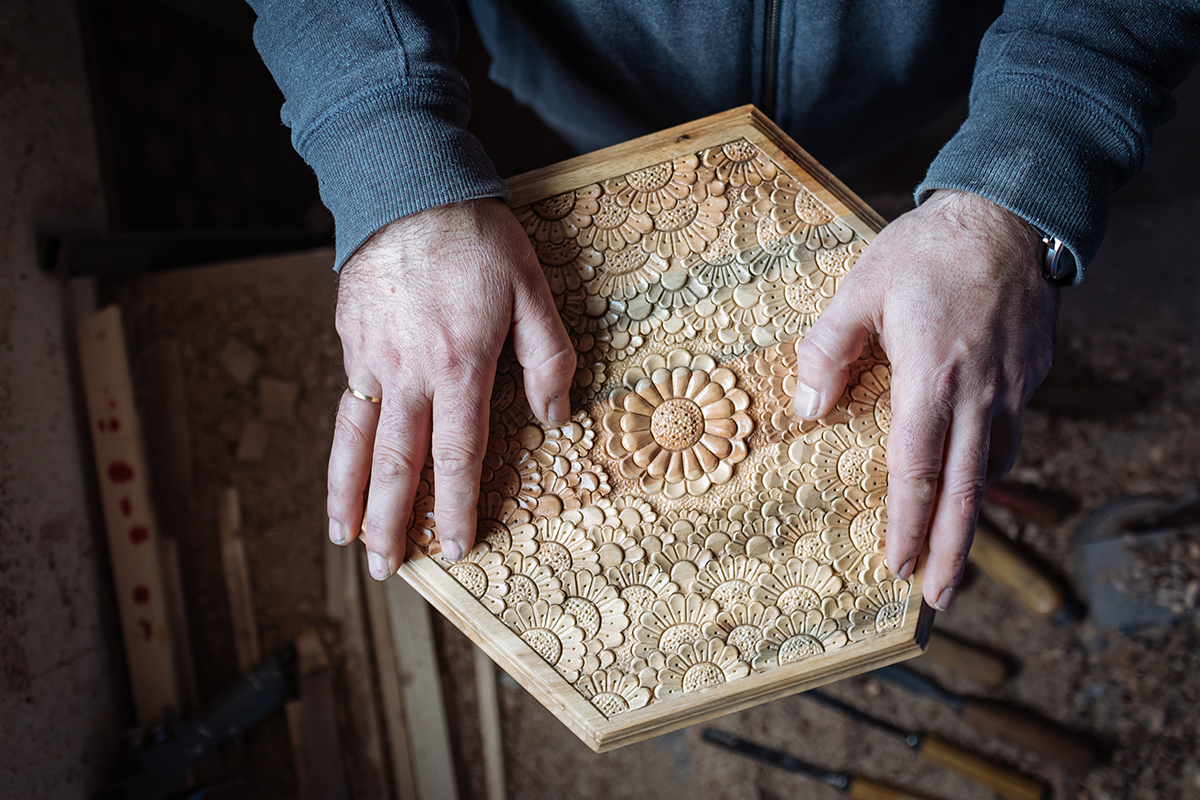FINE DUST a photography exhibition by Haris Čalkić
Fine dust PM 10 consists of tiny particles polluting the atmosphere which can be inhaled and enter the bloodstream, affecting the health of the respiratory and cardiovascular system in the body.
Written by: Selvedin Avdić
The exhibition “Fine dust” Fina prašina is only a part of much larger collection of photographs of Zenica and its steel factory that Haris Čalkić has been building for years. Looking through that collection with him one afternoon, I have seen many impressive photographs. But for me, the most powerful ones were those of people trying to live a normal life in the shadow of poisonous chimneys-some of them tending their gardens, walking, children playing football looking as cheerful as if they were in a park, in clean air.
“It is impossible to describe the Factory without the city, and vice versa. “
Happiness in hell
Haris admitted that he was always fascinated by such images, and by the fact that the people of Zenica love their city so much, although it does not give them much cause for love.
Because Zenica, as for all of Bosnia and Herzegovina, is difficult to love. Loving it is much like loving a scoundrel father. Every little gesture of tenderness by such a father, made by the way and in between his drunken sprees, is sufficient to forgive him everything and find an excuse for anything he did or did not do. I have written a whole book trying to explain, first to myself, this kind of emotion. …
Beauty is in the eye of the beholder.
Zenica and the Factory have an addictive relationship; you can spot it straight away, even if you are entering the city for the first time. Looking through the car window as you drive in, it looks like the Factory and the city fit together as smooth as the pieces of a puzzle. It is impossible to describe the Factory without the city, and vice versa. In the factory’s silhouette, the people of Zenica still read better times, those in which they didn’t have so much anxiety about the future. Younger generations have no such memories, so it makes sense that they are indifferent to the remnants of the past giant.
Many people from Zenica love the Factory. Some of them confessed to me that the first sight of its chimneys fills them with intense joy, even if they are on the way back from some attractive tourist destination. They love the city as well, often for no reason and without solid arguments, if there is at all any logical excuse for the emotion.
When speaking of Zenica, few beautiful words are used, most common are steel, chimneys, prison, workers, miners. Even in the phrases of affection to this city, the apocalypse roared from every word: city of fire and smoke or burning city. With none of the wordsmith finery reserved for the prettier places, it seems that not much can be said about Zenica. Still, it wasn’t always like that, and fine words had been used to describe it.
Cities can have associations with seasons: fragrant as spring, energizing as summer, or sluggish as winter. Zenica is a city of autumn: inconstant, always in between stages. Often depressive, mostly because of never knowing what comes next.
Zenica is also a city easy to offend. We could recognize it in Brecht’s poem On the cities:
Unbeneath them are canals
inside, nothing, above rising smoke
We were there. We haven’t enjoyed it.
We passed quickly. Quickly they pass too.
Also, it is not that easy to write about and write out a city.
Daša Drndić has written that the extent to which cities speak, expose or hide themselves corresponds to readiness and the manner in which a person is approaching them; what a person searches for in a city is usually found, and that in front of which, as approaching, keeps eyes closed, remains hidden, suppressed and/or forgotten.
It is time to open our eyes.
We don’t have any longer the public enem, a steel giant against which every argument was lost in advance. Today, the factory is of little consequence, it neither looks nor it is as strong as it used to be. It has been reduced to an appropriate measure. Now the city can be seen much clearer. We should not close our eyes at the Fine dust of Haris Čalkić. It could help us see better.
My hometown Zenica is well known by three things: soccer club Čelik (steel), one of biggest jails in Bosnia (KPD Zenica) and, of course, the biggest Steel mill in country. A lot of debate and question about pollution is in Zenica all these years. As a photographer I documented emissions from factory chimneys. Most of particles and colored smokes are called FINE DUST.
Limit values for fine dust emissions are based on total particle weight. It is the ultra-fine particles, however, that are particularly harmful to health. A new technique separates them by size and identifies their composition directly where they arise. Fine particle emissions have been the subject of heated debate for years.
People who live near industrial plants see the smoke being discharged into the atmosphere and wonder how harmful it is. But visible emissions are not always the most harmful. The highest risk is posed by fine dust particles which can easily penetrate the human organism. These ultra-fine particles are difficult to measure, however, because they are less than 100 nanometers in diameter.
EXHIBITION DATES:
ZENICA // 22.8.2015. // Anti Dep Zen Fest – Alija Izetbegovic’s Square
SISAK // 4.9.2015 // Gallery Siscia Obscura






















